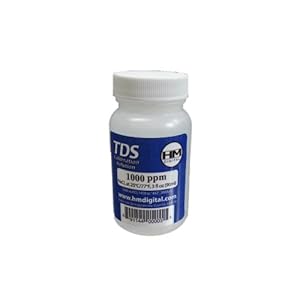Measuring Minerals in the Resevoir - Understanding TDS Meters and Their Role in Tower Gardening
What is TDS?
TDS, or Total Dissolved Solids, refers to the total amount of mobile charged ions—minerals, salts, or metals—dissolved in a specific volume of water. It is measured in milligrams per liter (mg/L) or parts per million (ppm). A TDS meter is a small, handheld device that measures this value, helping to determine the density of the nutrient solution. This can be useful for knowing when to add nutrients to your Tower Garden. Keep in mind that temperature can affect TDS and EC (Electrical Conductivity) meter readings.
Do You Need a TDS Meter to Grow Successfully with a Tower Garden?
Absolutely not! Thousands of families across the U.S. have been growing successfully with Tower Gardens for years without using a TDS meter. If you follow the provided instructions—including how and when to add the Tower Garden Mineral Blend—you won’t need one.
What Should TDS Readings Be in a Tower Garden?
- General Range: 1500–1800 ppm
- Summer Range: 1000–1500 ppm
Why reduce TDS in the summer? During hot months, water evaporates, but minerals remain. Too many dissolved solids can harm your plants, especially in high heat. Keeping TDS lower in the summer helps maintain a healthy balance.
How Much Does a TDS Meter Cost?
TDS meters vary in price, ranging from $15 for basic models to several hundred dollars for high-end commercial units. The one I use at home costs about $22 and measures both ppm and temperature. You can find a similar model here on Amazon.
How to Use a TDS Meter
-
Calibrate Your Meter: Most meters require calibration before use. Since Tower Gardens typically operate around the 1000 ppm range, you’ll need calibrating fluid with a similar value. Check your meter’s guide for specific instructions.

- Test Your Solution: Follow the instructions provided with your meter to measure the TDS of your Tower Garden’s water.
- Maintain Calibration: Over time, recalibration will be necessary. Calibrating fluids are affordable, usually under $10.
Important Note:
Always check your pH levels after adding minerals to the water. Also bear in mind that TDS refers to the total amount of dissolved solids in the water. It does not let you know the specific amounts of each mineral therefore it won't tell you if potassium is high or copper is low, for example. For this reason it is still a good idea to empty the reservoir every 30-60 days to prevent nutrient lockout.
Ready to Start Your Tower Garden Journey?
If you don’t already own a Tower Garden, now’s the time to join the growing community of successful gardeners! Click here to purchase your Tower Garden.
By understanding TDS and how to manage it, you can fine-tune your Tower Garden experience—but remember, it’s entirely optional! Happy growing! 🌱


